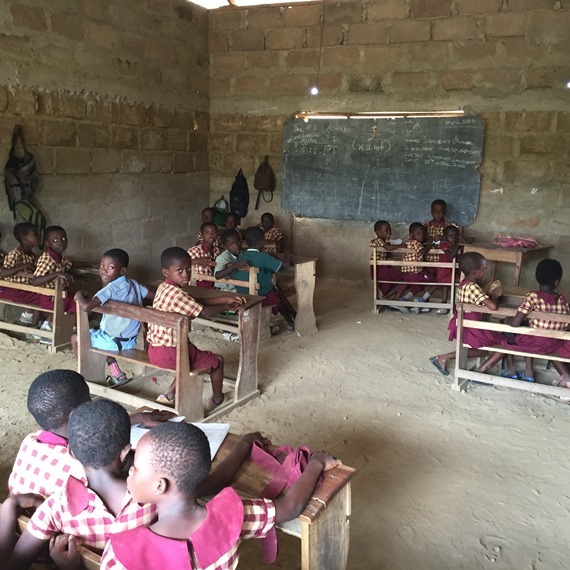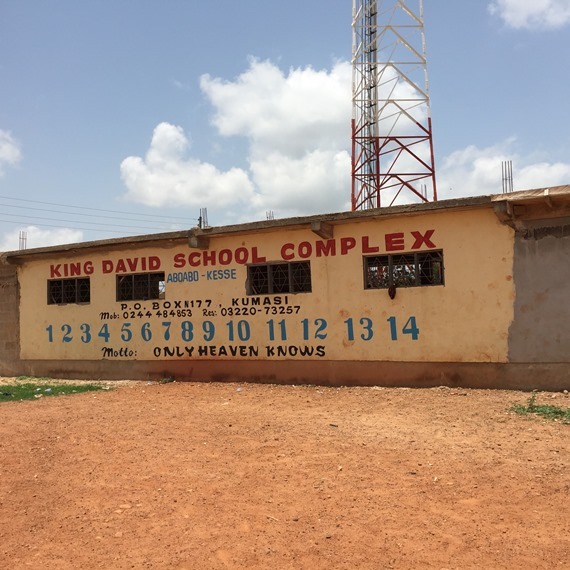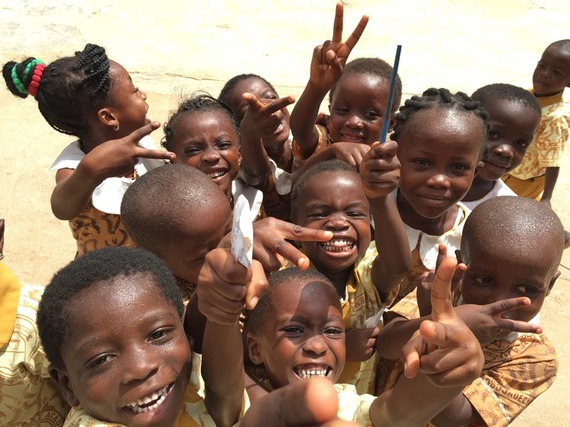"Non-government schools serving the poor are a universal phenomenon but are not always recognized as such...Non-government schools serving the poor should be treated as an integral part of achieving the objective of basic Education for All. It should be seen as a welcomed complement to an often overburdened public system."
In September 2014, Dr. Kishore Singh, special rapporteur on the right to education, submitted a report to the United Nations General Assembly that focused on the privatization of education. Dr. Singh's position was that the State has responsibility for the provision of education and that "the principal responsibility of education lies with Governments, thus emphasizing a need to preserve education as a public good, which must not be reduced to a profit-making business." Dr. Singh also concluded that privatization undermines education as a fundamental human right, often excludes marginalized groups, who are unable to pay tuition/fees, and that the emergence of low-fee private schools further undermines public schools and the right of universal access to education. Since this report, Dr. Singh has continued to publish articles criticizing a sector he clearly does not fully understand.
The IDP Foundation's position is definitely not to advocate privatization of education. Without question, it is the responsibility of governments to provide free quality education for all children and to provide every child with an equal opportunity. However, when the reality is that this is not happening, governments, academics, and funders have a moral obligation to respect and include the efforts of operators of low fee private schools to fill the gap.
When Governments lack
According to the UNESCO Institute for Statistics report released in July 2015, "the global number of out-of-school children of primary school age rose by 2.4 million between 2010 and 2013, reaching a total of more than 59 million. This serves as a grim reminder that the world has yet to fulfill its original promise to provide every child with a primary education by 2015."
The failure to reach the Millennium Development Goal concerning education has led to Sustainable Development Goal 4, which states that by 2030 we must "ensure inclusive and equitable quality education and promote lifelong learning opportunities for all."
Goal 4 has 10 targets, and once again the emphasis is on state provision of free education, without any specific mention of the private sector's role.
Despite 70 years of international aid for education, governments in the developing world have not been able to achieve equal access to education for the most vulnerable populations of children. Countless billions of dollars have been wasted or unaccounted for and millions of children who could have been reached have not been reached.
This is as much the fault of the funders as it is of the recipient governments and the ways in which they choose to allocate the funding. There is much ignorance and waste in education funding by the global aid organizations because policies are decided by people who are either philosophically or politically motivated and often have little to no idea of the realities on the ground.
As a result, market-driven demand by the poorest people in the world has led to a huge escalation in the number of individually owned schools in areas where the governments have either have not built schools, or where they are so badly governed that parents are willing to sacrifice as much as they can in order to educate their children in a privately owned low fee school. Contrary to the position of many critics of this sector, these schools are basically struggling social enterprises that operate at either no profit or a very small profit in order to try to serve their communities.
They are among the most misunderstood of education providers and the subject of hot political debates by voices like Dr. Singh.
Advocates for the low-fee private school sector know that Dr. Singh's position does not take into account that these low-fee schools in many cases are the only opportunity to offer a child the fundamental right to education. It is one thing to philosophize on what ought to be, but to ignore reality and continue to marginalize the most poor is not the answer.
A case in point: Ghana
In Ghana, low-fee private schools are being established in rapidly increasing numbers. Parents choose to send their children to these schools because they feel they offer both access and a better quality of education - smaller class sizes, less teacher absenteeism due to better school governance and better value for money since the government schools are not, in fact, free.
However, these schools continue to be disenfranchised even though they are often the only viable solution, particularly in remote rural areas. This means that because of the poverty level of parents and the very low or no profit margins for the schools proprietors, there is little on offer in terms of qualified teachers and adequate teaching and learning materials.
It is important to remember that in any country, only two groups of funders provide these goods and services in any kind of sustainable way: Governments or parents. In the case of these schools, the government does not provide any assistance and the parents are far too poor to contribute much at all. This hardly helps to serve these children.
Given that low-fee private schools do exist in large numbers and receive such little help, the IDP Foundation established the IDP Rising Schools Program in September 2009 in partnership with Sinapi Aba Trust, the largest microfinance institution in Ghana. The goal has been to assist low-fee private schools owners improve their schools and provide support to a sector that in Ghana is attempting to educate hundreds of thousands of children.
This program offers proprietors extensive training in school management and financial literacy, coupled with access to microfinance loans that are offered at below market rates to stabilize school infrastructure (i.e. purchase the land where the school resides, build floors, walls, roofs and new bathrooms and classrooms, purchase buses, etc.) Improved infrastructure leads to more days in school in harsh weather conditions and offers a more conducive learning environment.
The IDP Rising Schools Program training also emphasizes the importance of registering with the Ghana Education Service (GES) and actively engaging with the district offices and circuit supervisors, alongside other topics such as community relations, savings and reinvestment, human resources management, and more. The program teaches school owners how to work with the government so they might be able to secure textbooks and some teacher training support, which the government is mandated to provide to all registered schools (public or private) but doesn't because of budget and management constraints.
The schools participating in the IDP Rising Schools Program are individually owned and are on average 10 years old, with the oldest school being more than 30 years old. The fees that are charged vary according to grade level, the number of children from one family and the ability of the parents to pay. Most schools offer free scholarships to a number of children.
The program has proven that these school owners are not gouging the poor, but are responding to a clear market demand and filling a gap the government cannot. These school proprietors are passionate about education, so much so that they oftentimes subsidize the costs of operations with profits from their other businesses (i.e. cocoa farms).
The IDP Rising Schools Program began as a three-year pilot that identified 105 existing poor primary schools with an enrollment of 27,000 students. To date, the program has proven to be sustainable and replicable with 522 primary schools that have entered the program, reaching about 123,000 students. In addition to improved learning environments and increased enrollment, the program has built the local capacity of these social enterprises to better serve their communities. There has been a 96% repayment rate of the loans and many schools have taken multiple loans, step by step improving their schools. The program is profitable to Sinapi Aba despite offering loans at below market rates.
While the IDP Rising Schools Program has been a dark horse on a crusade to provide a voice for inclusion of the low-fee private school sector, other advocates are also emerging. It is time for more of us to move beyond the politics and ideology of private versus public provision of education and demand quality across entire education systems. We need to recognize the reality of a growing low-fee private school sector and determine the policies required to support their improvement. The IDP Rising Schools Program offers one kind of education financing model that is sustainable and can potentially have a huge reach.
As the funding gap for education grows, governments should leverage the cost savings provided by these schools and determine funding policies that ensure equitable access to private schools rather than focusing on building more public schools to replace them. Without more inclusion of the sector by both governments and funders in programs and education sector plans, many of the world's poorest children continue to be underserved, in turn, perpetuating the cycle of poverty and illiteracy.
Follow IDP Foundation on Twitter: www.twitter.com/idpfoundation
Quote source: Heyneman, S.P., Stern, J.M.B., Low cost private schools for the poor: What public policy is appropriate? Int. J. Educ. Dev. (2013), http://dx.doi.org/10.1016/j.ijedudev.2013.01.002


